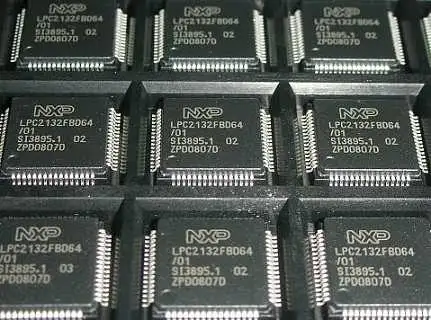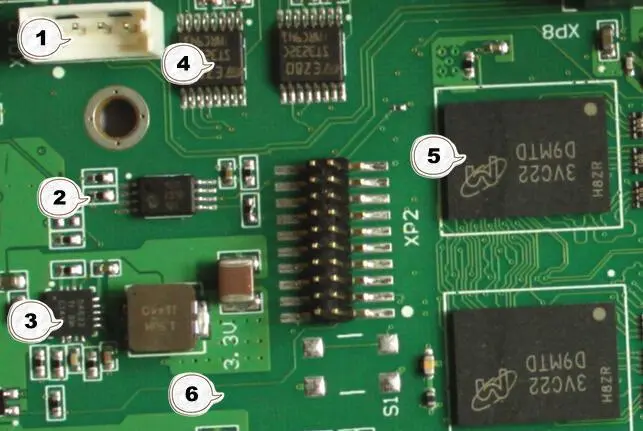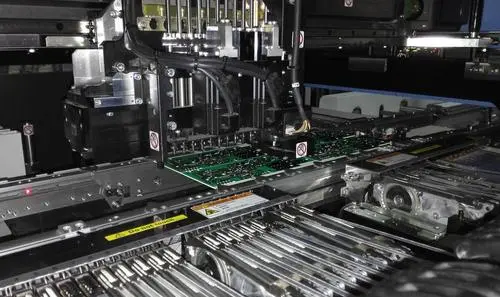
The sun resistance welding consists of three processes, the first is exposure, the second is development, and the third is PCB program repair. The following details the three processes, the points needing attention in the process, and how to operate them.
Soldering resistance process in printed board refers to the printed board with soldering resistance after screen printing. The bonding pad on the PCB is covered with a photographic plate so that it is not exposed to ultraviolet light. The solder mask is more firmly attached to the PCB surface after ultraviolet light. The bonding pad is not exposed to ultraviolet light, so that the PCB copper bonding pad can be exposed so that lead tin can be applied on the hot air leveling surface.

The sun resistance welding process can be roughly divided into three operating procedures:
The first procedure is exposure. First, check whether the polyester film and glass frame of the exposure frame are clean before starting the exposure. If they are not clean, wipe them with an anti-static cloth in time. Then, turn on the power switch of the exposure machine, turn on the vacuum button, select the exposure program, and shake the exposure shutter. Before starting the formal exposure, let the exposure machine "air expose" five times. The role of "air exposure" is to enable the machine to enter a saturated working state, The most important thing is to make the energy of the ultraviolet exposure lamp enter the normal range. Without "air exposure", the energy of the exposure lamp may not enter the optimal working state. In the exposure, it will cause problems on the printed board. After five times of "air exposure", the exposure machine has entered into the best working state. Before aligning with the photographic plate, check whether the plate quality is qualified. Check whether there are pinholes and exposed parts on the coating surface of the substrate, and whether they are consistent with the graphics of PCB printed board, because this will check the photographic substrate to avoid rework or scrapping of the printed board for some unnecessary reasons.
The sun resistance soldering usually adopts visual positioning, uses silver salt base plate, aligns the bonding pad of the base plate with the bonding pad hole of the printed board, and uses tape to fix it for exposure. The sun resistance soldering encountered in alignment usually adopts visual positioning. The silver salt base plate is used to align the bonding pad of the base plate with the bonding pad hole of the printed board, and then it can be exposed after being fixed with tape. There are many problems in alignment. For example, because the bottom plate is related to temperature, humidity and other factors, if the temperature and humidity are not well controlled, the photographic bottom plate may be shrunk or amplified and deformed. In this way, the photographic bottom plate and the printed board pad are not completely matched during sun resistance soldering. When the base plate shrinks, the difference between the base plate pad and the printed board pad is determined. If the difference is very small, lead tin can be applied during hot air leveling, so there is no big problem for selenium resistance soldering. If the difference is very large, the only way to do this is to reprint and try to make the base plate pads overlap. Before alignment, pay attention to whether the drug film surface of the bottom plate is reversed. Make sure that the drug film surface is facing down when aligning. If it is facing up, the drug film surface will be scratched, which will cause the bottom plate to be exposed, so that the exposed part of the printed board does not need solder blocking, which will cause the printed board to be scrapped in serious cases. In addition, it is also important to note that sometimes the bottom plate of the plate assembly does not coincide with the printed circuit board figure. Generally, the bottom plate of the plate assembly is cut along the edge of the panel, and then the whole printed circuit board is aligned and exposed. The above problems should be noticed before formal exposure of selenium resistance welding.
Then, perform sun resist welding. Before exposure, check whether the printed board is covered by the vacuum box. The pressure of vacuum coating shall be sufficient without dew. If the air dew will make the ultraviolet light shine into the pattern along the side of the board, causing the shading part to be exposed and not develop. Sometimes, the one-sided exposure is encountered. In this case, the side without the pattern on one side is separated from the ultraviolet light emitted by the exposure lamp with a black cloth. If the black cloth is not used, the ultraviolet light will be transmitted to the bonding pad through the side without the pattern, so that the solder mask in the bonding pad hole will not develop after exposure. When exposing printed boards with inconsistent graphics on both sides, screen print one side of solder mask first, and then conduct single-sided exposure. After development, screen print the other side solder mask. Because if both sides are screen printed and exposed at the same time, there are more complex solder pads on one side, more parts need to be shielded, and less parts need to be shielded on the other side, so that ultraviolet light can penetrate one side and shine on the other side. The more shielded side will be irradiated by ultraviolet light, and no shadow will appear during development, It will cause rework or scrap. During the exposure process, the printed boards after screen printing are not dried during curing. In this case, solder blocking will be stained on the photographic plate during alignment, and the printed boards also need to be reworked. Therefore, if the printed boards do not dry, especially if most of the printed boards are not dried, they should be dried again in the oven. These problems are easy to occur in the process of exposure, so we should carefully check, find and solve them in time.
The second process is development. The development operation is generally carried out in the developer. Better development effect can be obtained by controlling the development parameters such as the temperature, transmission speed and spray pressure of the development solution. Development is to remove the solder mask on the bonding pad with the development solution on the light shielded part. The solution used for development is 1% anhydrous sodium carbonate, and the liquid temperature is usually between 30 and 35 ℃. Before formal development, the developer shall be heated to make the solution reach the predetermined temperature, so as to achieve the best development effect. The developer is divided into three parts: the first section is the spray section, which is mainly used to spray anhydrous sodium carbonate under high pressure to dissolve the unexposed solder resist; The second section is the water washing section. First, the high-pressure pump is used for water washing. First, the residual solution is washed with water, and then it is washed thoroughly with circulating water; The third section is the drying section. Before and after the drying section, there is an air knife, which mainly uses hot air to dry the boards. In addition, when the temperature of the drying section is high, the boards can also be dried. The correct development time is determined by the development point. The development point must be kept at a constant percentage of the total length of the development section. If the development point is too close to the outlet of the development section, the unexposed solder mask can not be fully developed, which may cause the residue of the unexposed solder mask to remain on the board. If the development point is too close to the entrance of the development section, the exposed solder mask may contact the developer for too long, It may be corroded and become hairy and lose luster. Generally, the development point should be controlled within 40% - 60% of the total length of the development section. In addition, it should be noted that the board can be easily scratched during development. The usual solution is that during development, the board placing operator should wear gloves, handle the board with care, and the size of printed boards is different. Therefore, the boards with similar sizes should be placed together. When placing the boards, a certain distance should be kept between the boards, To prevent the plates from being crowded during transmission, causing "jamming" and other phenomena. After developing, place the printed board on the wooden bracket.
Third operation procedure:
The board repair includes two aspects, one is to repair the defects of the image, the other is to remove the defects irrelevant to the required image. During the board repair process, you should pay attention to wearing spinning gloves to prevent the board surface from being polluted by hand sweat. Common board defects include:
1. Jump printing is also called Feibai. It is mainly because the electroplating current is too large and the coating is thick, which causes the graphic lines to be too high. When screen printing the printed board, the scraper knife and the screen printing frame form a certain angle, so the lines on both sides of the line are too high, so the ink will not be discharged. This causes skip printing. Another reason is that the scraper knife has a gap, and there is no ink at the gap, which causes skip printing. The solutions are mainly to control the electroplating current and check whether the scraper knife has a gap.
2. Oxidation. There are signs of blackening on the copper foil line under the solder mask layer of the printed circuit board. The cause is that the water is not dried after wiping the board, and the surface of the printed circuit board is splashed with liquid or hand molded before solder mask printing. The solution is to visually check whether the copper foil on both sides of the printed circuit board is oxidized during screen printing.
3. The surface is uneven. During screen printing, the paper is not printed in time, and the residual ink of the screen plate is removed, resulting in uneven surface. The solution is to timely remove the residual ink of the screen plate.
4. Resistance welding in the hole. The reason is that the paper was not printed in time during screen printing, which caused the screen plate to accumulate too much residual ink, and the residual ink was printed into the hole under the pressure of the scraper. The solution is to print the paper in time. Also, the number of screen mesh is too low, which will also cause resistance to welding in the hole. The high mesh screen should be used for plate making. The viscosity of the printing material is too low. The printing material with high viscosity should be used instead. The angle of the scraper screen printing should be appropriately increased, and the blade of the scraper should be rounded, Sharpen the blade of the scraper.
5. The figure has pinholes. The reason is that there is dirt on the photographic plate, so that the part of the printed board that should see light does not see light during the exposure process, resulting in pinholes in the graphics. The solution is to regularly check the cleanliness of the photographic plate during the exposure process.
6. Dirt on the surface. As the PCB screen printing room belongs to a clean room, there should be an electrostatic wire at the screen printing air outlet to adsorb impurities such as flying hairs in the air. Therefore, in order to reduce surface contaminants, it is necessary to fully ensure the cleanliness of the clean room and properly implement some specific measures: for example, when entering the clean room, it is necessary to fully ensure the cleanliness of the operator, prevent irrelevant personnel from walking through the clean room, and regularly clean the clean room.
7. The colors on both sides are inconsistent. The reason may be that the number of blades on both sides of the screen printing is very different, and there is a mixture of new and old ink. It is possible that one side of the screen printing is the new ink that has been stirred and the other side is the old ink that has been used for a long time. The solution is to avoid the above two situations as far as possible.
8. Cracking. During the exposure process, the exposure amount is insufficient, which causes small cracks on the board surface. The solution is to measure the exposure amount to make the comprehensive values of the exposure lamp energy, exposure time and other parameters reach 9-11 exposure levels, within which cracks will not occur.
9. Bubbles. Bubbles are generated between lines of the printed board or on the side of a single line after development. Main reasons: Bubbles between two or more lines are mainly caused by too narrow line spacing and too high line. When screen printing, the PCB solder mask cannot be printed on the substrate, resulting in air or moisture between the solder mask and the substrate. When curing and exposure, the gas expands when heated, causing a single line to be caused by too high line. When the scraper contacts the line, the line is too high, and the angle between the scraper and the line increases, The solder mask cannot be printed to the root of the line, so that there is gas between the side of the root of the line and the solder mask layer, and bubbles are generated after heating. The solution is as follows: During screen printing, visually check whether the screen printing material is completely printed to the PCB substrate and the side wall of the line, and strictly control the current during electroplating.
10. Ghosting: There are regular ink spots near the bonding pad on the entire printed board. The reason is that the printed board is not firmly positioned during screen printing and the residual ink on the screen plate is not removed and piled up on the printed board in time. The solution is to fix it firmly with the positioning pin and remove the residual ink on the screen plate in time.
In the process of revision, due to the serious defects of some printed boards that are irreparable, the original solder barrier is dissolved by heating with sodium hydroxide aqueous solution, and then re exposed after screen printing for rework. If the defects of printed boards are small, such as small copper exposed spots, they can be carefully repaired with a fine brush dipped in the adjusted solder barrier.
The above is the whole process of printed board. Although this process is a relatively simple process in each process of printed board, it also plays an important role. The sun drying and soldering process controls the appearance of the printed board and the inside of the holes, and strives to achieve the "most beautiful" for the "beautiful coat" of the printed board, so that the printed board looks more comfortable, plays a protective role, and controls the quality of the holes, The solder mask will not appear in the hole of the printed circuit board to ensure the quality of the printed circuit board. Therefore, the drying and solder mask process of the printed circuit board is a very important process.






